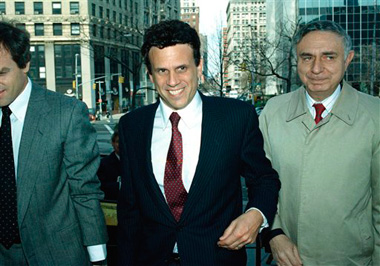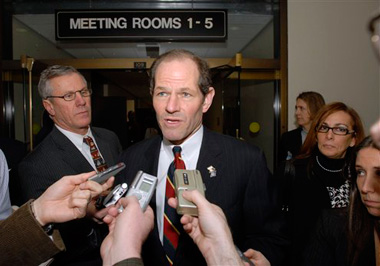 Steve Luckenbach wrote in April of a Harris Interactive poll taken at the height of the recession in which the financial services industry tied with Big Tobacco as the lowest regarded of all industries. The depths of one of the worst financial crises in history is a terrible time to gauge public opinion of the financial industry, but the image of the financial services industry as a cabal of sleazy salesmen robbing little old ladies of their life savings is one that is too easy to conjure.
Steve Luckenbach wrote in April of a Harris Interactive poll taken at the height of the recession in which the financial services industry tied with Big Tobacco as the lowest regarded of all industries. The depths of one of the worst financial crises in history is a terrible time to gauge public opinion of the financial industry, but the image of the financial services industry as a cabal of sleazy salesmen robbing little old ladies of their life savings is one that is too easy to conjure.
We, of course, know better. There are bad apples in every bunch, sure, but there aren't many; in an ever-growing list of 130 influencers over the nine years of the IA 25, Investment Advisor's annual list of the most influential people in and around the industry, we only managed to rustle up three baddies whose influence was large enough for them to be included in the IA 25 over the years.
Find out who they are in the following slides. (And see the complete list and Special Report schedule for extended profiles of all the 2011 members of the IA 25).
Bernie Madoff, 2009
A man who needs no introduction, for all the wrong reasons. As Bob Keane wrote when Madoff appeared on the IA 25 in 2009, Madoff "will not be remembered as a former chairman of the Nasdaq exchange or as a noble philanthropist," but rather as the architect of a global Ponzi scheme that cost investors upwards of $65 billion.
It's not just his part in the Ponzi scheme to which all other Ponzi schemes will be compared that makes Madoff so influential, however. The effect he had on the industry's reputation over all will be long felt by frustrated honest advisors.
"Madoff's scam hurt thousands of individuals and institutions, but the damage is more than monetary," Keane wrote in 2009. Instead of elevating advisors' influence on their clients' financial lives, FSI president Dale Brown said Madoff's "crimes undermined the confidence of many, many clients in their fine, upstanding, and honest financial advisors."








 May 31, 2011 at 08:00 PM
May 31, 2011 at 08:00 PM











 Michael Milken, 2010
Michael Milken, 2010 Eliot Spitzer, 2003-2005
Eliot Spitzer, 2003-2005